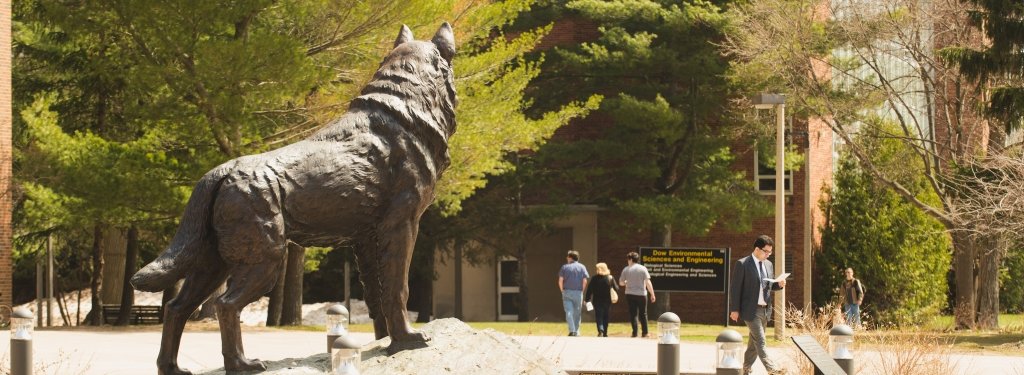Since the 1980s, American women have made great strides in academia, particularly in the number of degrees awarded. Females now make up more than one half of the undergraduate population and earn the bulk of master’s degrees. In the 2008–09 academic year, for the first time in history, more women than men earned doctorates, according to the Council of Graduate Schools.
Beyond the doctoral level, however, women are underrepresented. “It’s an effect called the ‘academic glass funnel,’” says School of Business and Economics Professor Sonia Goltz. “As you move up through the ranks of academia, the percentage of female faculty, especially those with tenure, declines dramatically.”
Women are overrepresented in part-time, nontenured, and primarily teaching positions, and sexual harassment and lower salaries continue to plague women, explains Goltz. “ These differences are greater at more financially affluent universities, private universities, and at more prestigious institutions,” she says. “For example, AACSB, the accrediting body for business schools, reported that in 2008, gender differences were still evident, with women found in smaller proportions in schools with graduate programs, in private institutions, in the highest paying fields, and in the highest rank, full professor.”
The academic glass funnel has been well-documented and has affected thousands of women over many years. However, progress toward eliminating it has been painfully slow, perhaps because the causes are not obvious or well understood. Based on her knowledge of the statistics, as well as her own personal observations as an academic, Goltz became interested in researching this vital topic.
Supported by Michigan Tech, Goltz researches second-generation discrimination, a major cause of the discrepancy between the number of female faculty hired by a university and the number who receive tenure. Unlike first-generation discrimination, where women are openly denied opportunities because of their gender, second-generation cases involve a complex and nuanced set of events and prejudices.
Goltz’s research involved traveling across the country to interview women who were involved in second-generation discrimination cases at their respective universities. This was a very unusual study because plaintiffs often do not discuss their cases for various reasons.
However, as Goltz found, these women have unique insights into important processes at their universities and in the court system. Each participant experienced a multitude of incidents and attitudes that combined to restrict career advancement. “Many factors add up to form this type of discrimination,” says Goltz. “Women might be excluded from informal social-networking gatherings, for example, or find that their ideas and research are discounted by male faculty members.”
When examined individually, such events and attitudes may seem innocuous, but when they build up over a period of years— and, in many cases, are adopted into the university system and culture—they create a barrier for women in academics. What’s more, says Goltz, a woman who tries to call attention to unjust practices is often labeled a troublemaker, which can cause further prejudice and negatively impact her career. In addition, these cases are difficult to prosecute in the legal system.
These and other conclusions based on her research are described in four academic articles examining different themes surrounding the issue, as well as a book manuscript that takes a holistic view.
The study also has inspired additional research that will explore a method with potential to highlight and address the issue. Goltz is collecting in-depth data about female empowerment in two Midwestern universities, using a modified version of the Social Watch Gender Equity Index (GEI), which rates countries based on the empowerment, education, and economic activity of women.
The goal of this ground-breaking research, says Goltz, is to bring to light the pervasiveness and serious effects of second-generation discrimination to inspire the legal system and universities to make the structural changes that are necessary to achieve equality.
Goltz believes that it is important to understand and correct discrimination at universities since research indicates that students learn as much through the behaviors modeled for them as they do through traditional methods. These are the students who eventually become corporate America.
Certainly, the glass funnel is evident in corporate America as well. For instance, in the corporate world, in recent years, women made up about 40 percent of the managerial and administrative workforce, but these jobs have been mostly in lower and middle management. The percentage of women in the corporate power base is even smaller, taking into account that many of the few women executives that do exist are in less powerful support roles, such as VP for human resources.
Not only is the percentage small, but there is recent evidence that the percentage is falling and stalling rather than rising. It has been estimated that, at this rate of change, it will take another seventy years to achieve equity at the top of US companies.
“That is a long time to achieve equity, and if I can help shorten that time even a little bit with this research, it will have been worth the effort,” says Goltz.
Michigan Technological University is an R1 public research university founded in 1885 in Houghton, and is home to nearly 7,500 students from more than 60 countries around the world. Consistently ranked among the best universities in the country for return on investment, Michigan's flagship technological university offers more than 120 undergraduate and graduate degree programs in science and technology, engineering, computing, forestry, business, health professions, humanities, mathematics, social sciences, and the arts. The rural campus is situated just miles from Lake Superior in Michigan's Upper Peninsula, offering year-round opportunities for outdoor adventure.




